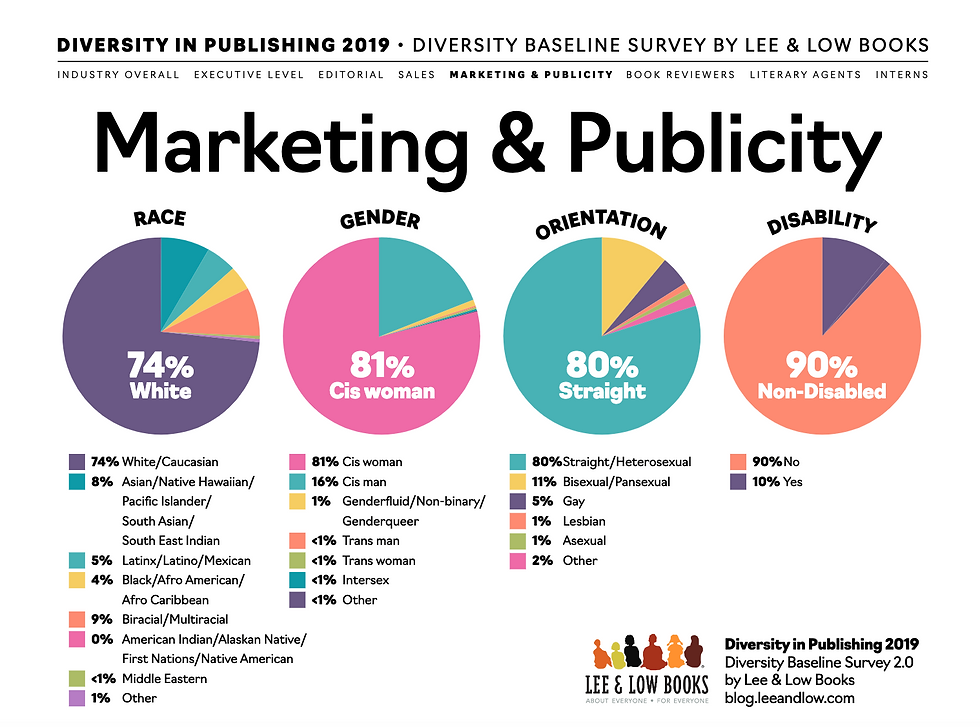Why do we need to "color the canon"?
- Kaci Tavares

- Mar 15, 2020
- 4 min read
Updated: May 18, 2020
As someone who self-identifies as Chinese-American who comes from Hawaiʻi, I was never aware that most of the Anglosphere considered me a minority. In my graduating class of 420 students in Hawaiʻi, you would have a hard time finding someone who was not if not all, then at least part, East Asian. Only once I started applying to colleges, and needed to scroll past Caucasian to check the box labelled "Chinese," was I made aware that I was something many Americans saw as Other. And, it was when I received a letter from a university that offered me a $9,000 scholarship because I would “add valued diversity” to their student body that I realized just how demeaning being considered Other could be in modern day America. I was left wondering: had I been accepted based on my face, or what was behind it? And, if so, was my face-value only $9,000 USD?
In high school, surrounded by peers with variations of my facial features, I was less inclined to recognize the complete lack of representation I saw mirrored at me from the pages of my educational literature. Seated in an education course at Boston University, I was first asked: How many times have you “seen yourself” in a required reading text? Twenty years of being an avid reader and I could not name one book in my high school and college literary canons that featured an East Asian character. The closest one I could name was Piscine “Pi” Patel, the Indian Tamil protagonist from Yann Martel’s Life of Pi (2001). At least we had origins in the same continent!
I began to see my lack of representation in multiple areas: on the big screen, on the little screen, in the faculty at my universities, and, most recently, in the Anglosphere’s publishing industries—those who so crucially represent, choose, market, and distribute books by much-needed authors of color. According to Lee & Low Books' latest 2019 Diversity Baseline Survey, co-authored by Laura M. Jiménez, PhD & Betsy Beckert, an overwhelming 76% of the North American publishing industry self-identifies as white or Caucasian. The survey received over 7,000 individual responses, which came from 153 companies including “all of the Big Five publishers, eight review journals, forty-seven trade publishers, thirty-five university presses, and sixty-three literary agencies of all sizes from across North America” (Low & Lee Books). The full results of the survey’s overall findings can be seen in the image below:

If you’d like to read more about Lee & Low’s survey: click here.
The issue is not specific to the North American publishing sphere. A 2015 study conducted by Writing the Future, estimates that only 8% of the UK's publishing industry identifies as BAME, or black, Asian, or minority ethnic (Writing the Future qtd. by Flood). The researchers were only able to estimate this low statistic because "data was either not kept or not shared with researchers" (Flood). (Click here: for Writing the Future’s full study.) Additionally, in a personal conversation with Tessa McWatt, successful author of six novels, and her not-to-be-missed memoir Shame on Me: An Anatomy of Race and Belonging (2019, Scribe UK), Tessa recalls that in all her years of working in the UK's publishing industry, she’s never had an editor of color. The one person of color she remembers seeing in the office was an intern.
But why is coloring the canon and its gatekeepers so important? By 2050, 30% of the UK's population is estimated to identify as BAME (Writing the Future qtd. by Flood). And, by 2020, over 50% of Americans under the age of eighteen will identify as part of a minority race or ethnic group (Ho, "Diversity in Book Publishing"). The reality of a majority minority future means that if we want the next generation of children to grow up seeing themselves represented in literature, we need to begin changing literary canons in the Anglosphere today. As I look at my Amazon recommended booklist and see Toni Morrison as the only author of color on my list, I am reminded just how important it is to investigate and critique the current practices in the Anglosphere’s publishing industry.
I left Boston a firm advocate for creating a world where school faculties and curriculums reflect the diversity of its student body. It is an attitude that I believe should apply to all industries, including the Anglosphere’s publishing industry for how will we increase racial, cultural, and linguistic representation in texts without also including them in the conversation of publication? How many books by authors of color are passed up by agents or editors because they miss critical cultural cues? How many editors hinder the quality of minority authors’ texts because they are afraid of "editing out" culture, or, unknowingly, impose the expectation of white stereotypes onto them? How many marketing teams miss culturally specific opportunities to reach all of an author's potential audiences because they do not know how to market authors of color?
These are the questions I will attempt to investigate and suggest methods of mitigating over the next few weeks. Follow me on this blog, if you’d like to join me as I journey through the various steps of the publishing process and analyze how coloring the Anglosphere's publishing staff, will eventually help us color the Anglosphere's canon.
Thanks for reading!
Kaci
Works Cited:
Flood, Alison. "Report finds UK books world has marginalised and pigeonholed ethnic minorities." The Guardian, 15 Apr. 2015, theguardian.com/books/2015/apr/15/report-books-world-ethnic-minorities-london-book-fair. Accessed 16 Mar. 2020.
Ho, Jean. “Diversity in Book publishing Isn’t Just About Writers—Marketing Matters, Too.” Code Switch: Race and Identity, Remixed, 9 Aug. 2016, npr.org/sections/codeswitch/2016/08/09/483875698/diversity-in-book-publishing-isnt-just-about-writers-marketing-matters-too?t=1584319992973. Accessed 16 Mar. 2020.
Lee & Low Books. “Where is the diversity in publishing? The 2019 Diversity Baseline Survey Results.” The Open Book Blog, 28 Jan. 2020, blog.leeandlow.com/2020/01/28/2019diversitybaselinesurvey/. Accessed 16 Mar. 2020.




Comments